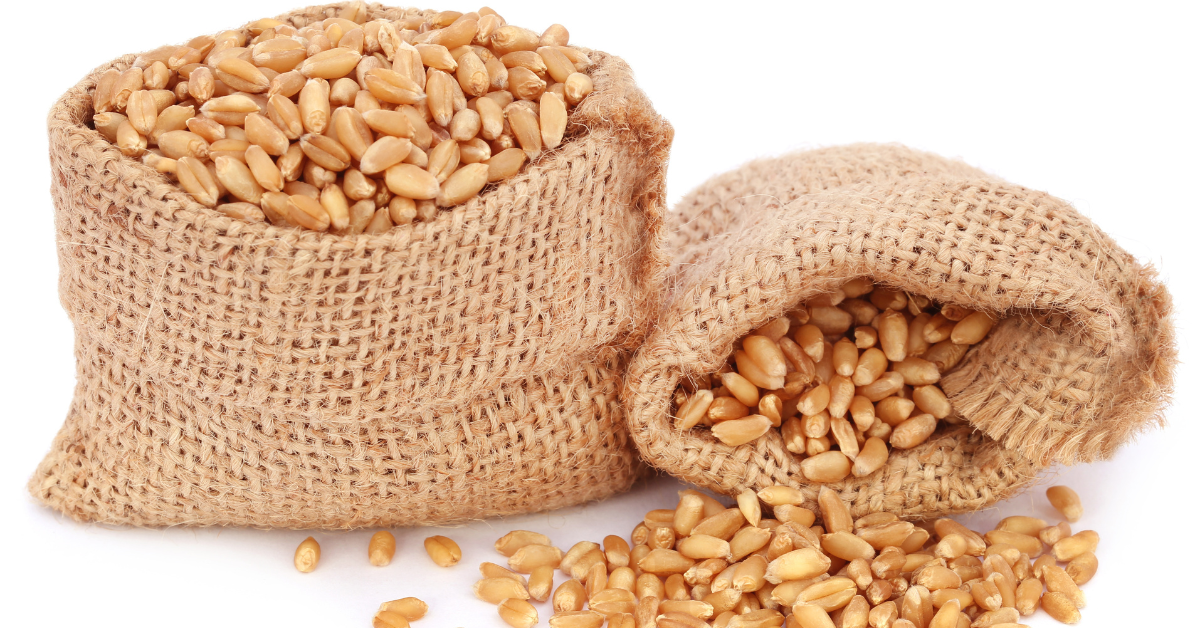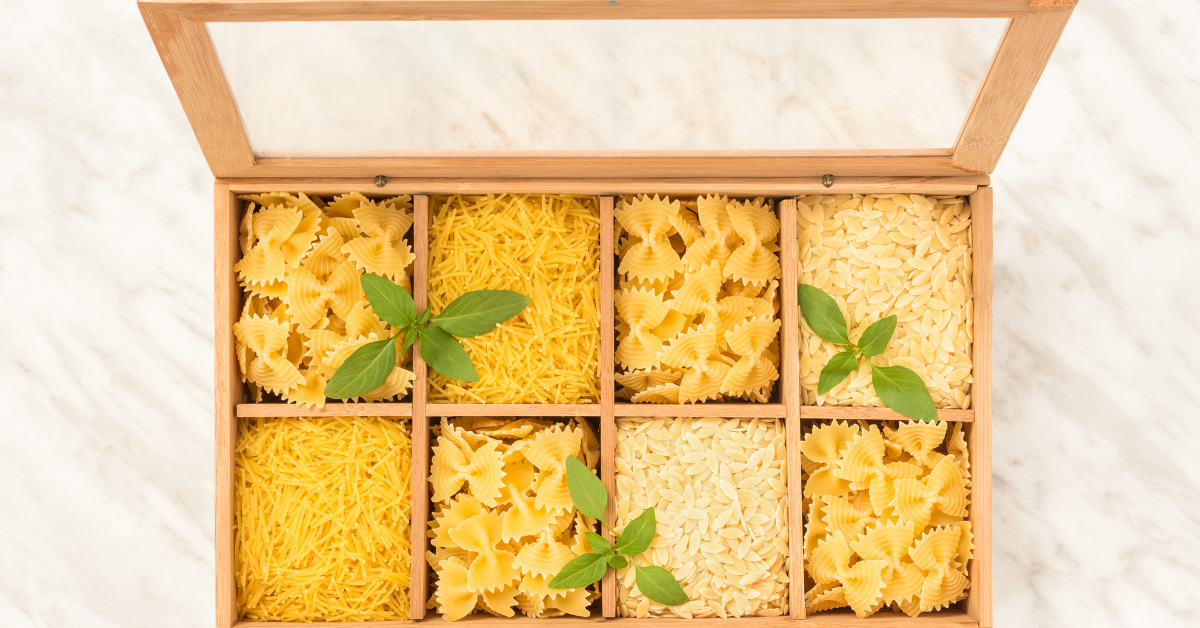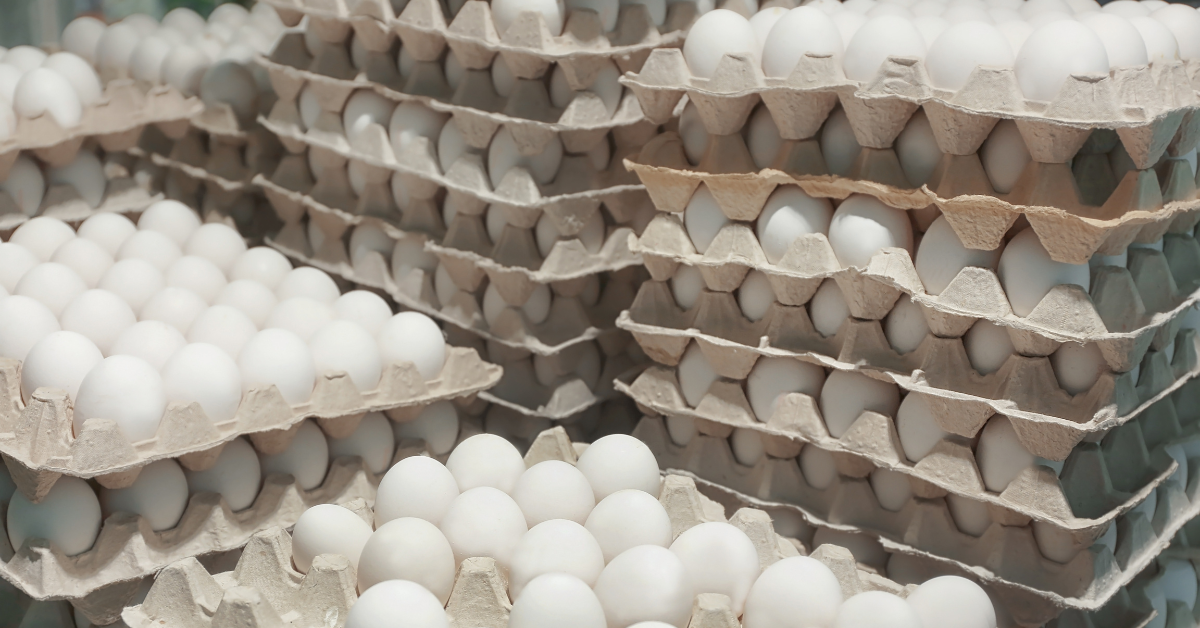The long-term shelf life of food relies directly upon where the food is kept, and the storage containers responsible for protecting the food. Therefore, long-term food storage containers and a location that remains cool, dry, and dark are essential for adequate long-term food storage. You simply cannot have one without the other.
If you are starting your food storage journey and are wondering what long-term storage containers are best, or if you are upgrading your current setup, keep reading to learn about 10 of our favorite containers that are perfect for storing food.
5 Factors That Can Ruin Long-Term Food Storage

There is a lot to think about when it comes to setting up your prepper pantry. This is especially true for thinking about what types of long-term storage containers you want to utilize. To help you guide your decision-making, we recommend focusing on the following five factors that could ruin your storage and spoil your food:
- Heat
- Humidity
- Oxygen
- Light
- Pests
Selecting a strategic location is step one to prevent any of these five factors from spoiling your food. After that, step two will be selecting the appropriate long-term food storage containers.
10 Long-Term Food Storage Containers
1. Storing in the Original Packaging
Nowadays, many processed foods come in relatively robust packaging. For foods like crackers, cookies, jams, bags of rice, frozen fruit, and peanut butter, the best option may be to keep the food in its original packaging.
Pros:
- Quick and convenient
- It does not require additional food storage containers
- Relatively airtight
- Food is already labeled
- Some containers are opaque and shield against sunlight
Cons:
- Packaging can be destroyed by flooding
- Not considered rodent or insect-free
- Packaging is not shatterproof
2. Food Storage in Mylar Bags

Mylar bags are one of the most widely used food-safe containers for long-term storage. When combined with a vacuum sealer and oxygen absorbers, and utilized by professionals or a diligent prepper, mylar bags are great at keeping food fresh for the long term. They work especially well fordehydrated foods, especially when kept inside another larger container.
Pros:
- Extremely lightweight and portable
- Bags are opaque and protect from sunlight
- They work exceptionally well with oxygen absorbers
-
Shatterproof
Cons:
- Not rodent-proof
- Can be expensive
- Packaging your food is a very involved process
3. Mason Jars for Long Term Food Storage

Before mylar bags,mason jars and other glass containers were the epitome of food storage. They have an old-school aesthetic that looks great in the pantry and is highly effective. That is why, to this day, mason jars are still one of the most popular food storage devices. You would be hard-pressed to find a pantry filled to the brim withsurvival food that didn’t have some glass mason jars.
Pros:
- Can easily visually inspect the contents inside
- Rodent and insect-proof
- They can be vacuum or heat-sealed for an airtight closure
Cons:
- Not shatterproof and can be broken
- Not opaque and thus cannot shield from sunlight
- Heavier than other containers
4. Circular Food-Grade Food Storage Buckets

Food-grade buckets are hard to beat when it comes to storing a large amount of food in one place. They come in various sizes (though five-gallon buckets are the most popular), and can be used for practically any type of food. In addition, they are constructed with high-quality plastic that won’t leach into your food and expose you to dangerous chemicals.
Pros:
- Opaque and protect from sunlight
- Rodent and insect-proof
- They can be reused for other tasks
- Shatterproof
Cons:
- Not easily stackable
- They may require new lids to be considered resealable
- They can be heavy to carry
- They may be inconvenient for daily use
5. Square Food-Grade Buckets

Square food-grade buckets are the obvious evolution to conventional, circular food-grade buckets. They have all the components that high-quality circular buckets have, but are more easily stacked and stored. As a result, square buckets are better for storing large amounts of food, such asbulk rice and beans, freeze-dried meat, fruits, and vegetables.
[product_render product-handle="freeze-dried-meat-6-pack"]
Pros:
- Easily stackable for better storage
- Come with a convenient handle for portability
- Can be reused for other tasks
- Rodent and insect-proof
- Will not break if knocked over
Cons:
- Larger than other containers
- It can be heavy to carry unless filled with freeze-dried or dehydrated foods

6. Pantry Organizers
A well-designed prepper pantry is truly a sight to behold. They are clean and contain a variety of delicious and nutritious foods. But one of their most essential qualities is that they are organized. Everything is labeled and has a certain spot. In addition, the well-devisedpantry organization makes food storage reliable and easy to use. For example, stackable can organizers are one of our favorite ways to keep a pantry organized.
Pros:
- Easily accessible
- They help you rotate through your cans with no second-guessing
- They look great and are aesthetically pleasing
Cons:
- Can be expensive
- May not fit into small shelves or narrow pantries
- Only good for keeping cans
7. Under the Bed Storage Containers
Not all your food needs to go in your prepper pantry. Sometimes you need to be creative. This is especially true for those living with less space in urban environments and focused onurban prepping. For example, one of the most under-utilized spaces for food storage is under the bed.
Pros:
- The space underneath the bed is dark
- Bedrooms are temperature regulated
- Takes advantage of underutilized space and frees up storage space elsewhere
- Perfect for items you don’t often need
Cons:
- Separate from the rest of your food and kitchen
- Susceptible to flooding
8. Water Storage Containers

This article is focused on long-term food storage, but in a survival scenario, water is prioritized before food. Therefore, it would be negligent not to mention water.Water storage is critical, not only for drinking water, but also for potable water used for washing, cooking, cleaning, and bathing. A diverse selection of individual water bottles, larger plastic jugs, and even larger water barrels is essential for adequate long-term water storage.
Pros:
- Water is affordable and can be drawn from the tap or harvested from rainfall
- Water jugs are stackable and portable
- High-quality water jugs come with a faucet for ease-of-use
Cons:
- Plastic water bottles create waste
- Water jugs and barrels can be difficult to move
9. Plastic Tupperware for Long-Term Storage

Using plastic containers for long-term food storage makes sense because you already have many of them lying around the house. They are perfect for packing lunches and storing leftovers in the fridge—so why not use them for food storage? Plastic Tupperware is most effective as an organizer for smaller foods; for example, for separating different flavors of breakfast bars.
Pros:
- Readily available
- Can see the contents inside
- Insect and rodent-proof
- Shatterproof if knocked over
- Can be easily stacked and organized
Cons:
- Often overpriced
- Not perfectly airtight
- Cannot shield from sunlight
10. Plastic Bottles
In prepping or during the throes of an emergency, there isn’t always an elegant solution. Sometimes, the cheapest, most convenient option is what you require. Imagine needing to quickly move food from point A to B or packing a little extra in your bug-out bags. That’s where plastic bottles come in handy.
Pros:
- Affordable and readily available
- Will not shatter if knocked over in an earthquake
- Can visually inspect the contents inside
- Good protection against insects and moisture
Cons:
- It cannot fully protect your food from moisture and humidity
- Not considered airtight
- The plastic may not be considered food-grade
- Not opaque and cannot shield food from sunlight
- Extra-hungry critters may be able to chew into the containers
Tips for Long-Term Food Storage Containers

The emergency food you stockpile is only as good as the containers you keep it in and the processes by which you keep everything stored. Now that we’ve talked about the 10 types of long-term food storage containers, we wanted to leave you with some tips to maximize the shelf-life of your food.
-
Keep your food in a cool, dry, and dark location. Things like moisture, humidity, and sunlight are the enemies of long-term food storage.
-
Routinely maintain and rotate your food. Even if you are not regularly eating from your food storage, keeping the area clean and monitoring expiration dates is advantageous.
-
Keep heavier items, like food buckets, on the bottom. This will reduce overhead falling hazards and make them easier to use.
-
Label all your items for ease of use. Labels with information—such as the type of food, when it was stored, and when it was opened—are helpful.
-
Make a plan for when your food storage runs out. There may come a time when your long-term food storage begins to run out. In this case, depending on the survival scenario, you will need to have a plan to grow, forage, or hunt for more food.
- Include some luxury items. Survival during and after an emergency can be difficult and stressful, so including some luxury items, like candy bars, can help boost morale.
Final Thoughts On Your Storage Container Choices
Adequate long-term food storage relies on two critical components. The first is selecting a strategic location that is protected, cool, dry, and dark. The second is using a selection of long-term food storage containers that protect your food, are easy to use, and can effectively utilize your space.
We hope you found this article helpful. To learn more about long-term food storage, visit ourPractical Prepper Blog. Or, to get involved in the community, check out ourFacebook Group. Lastly, if you have any questions about emergency survival food, don’t hesitate tocontact one of our product experts. We are happy to help!



